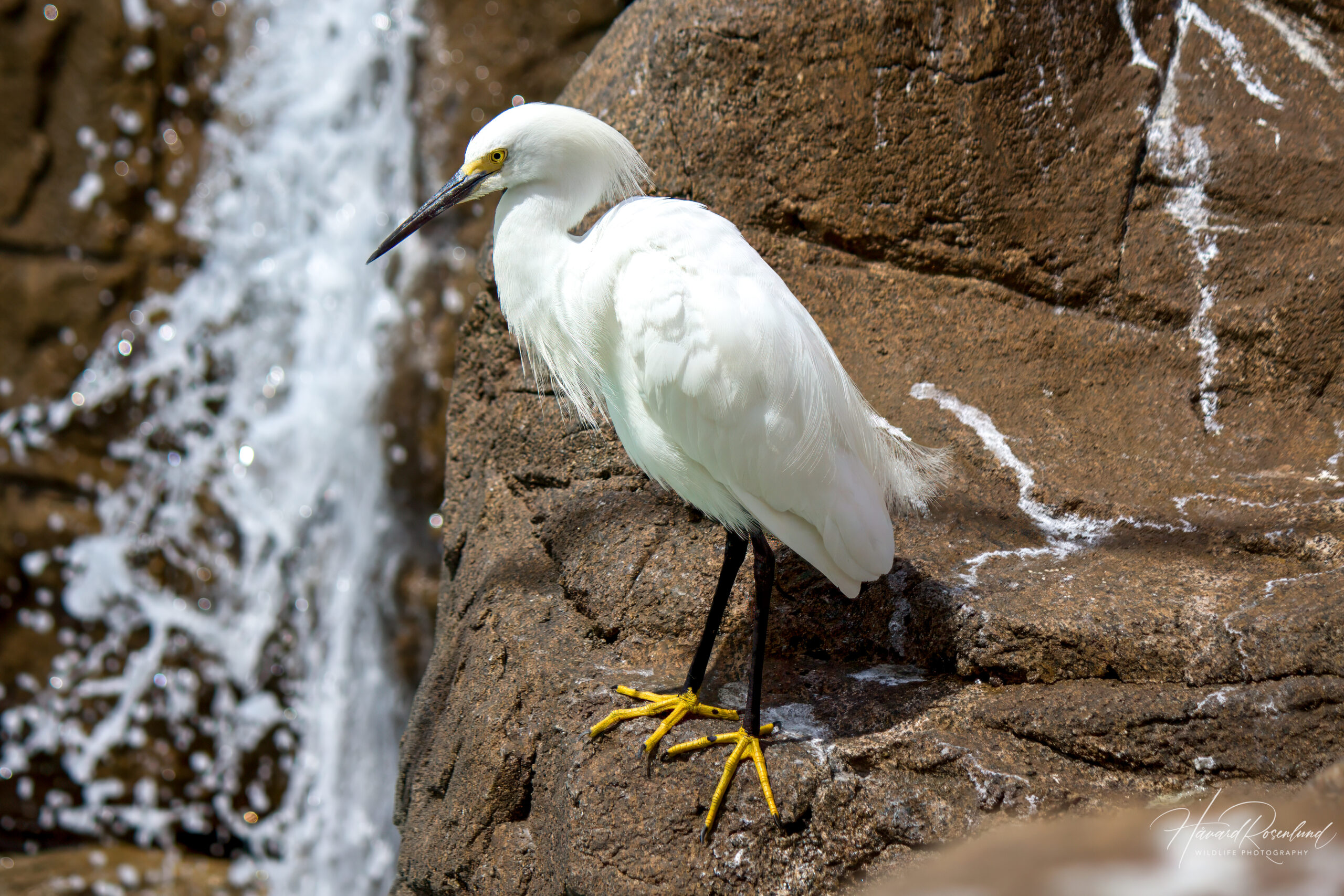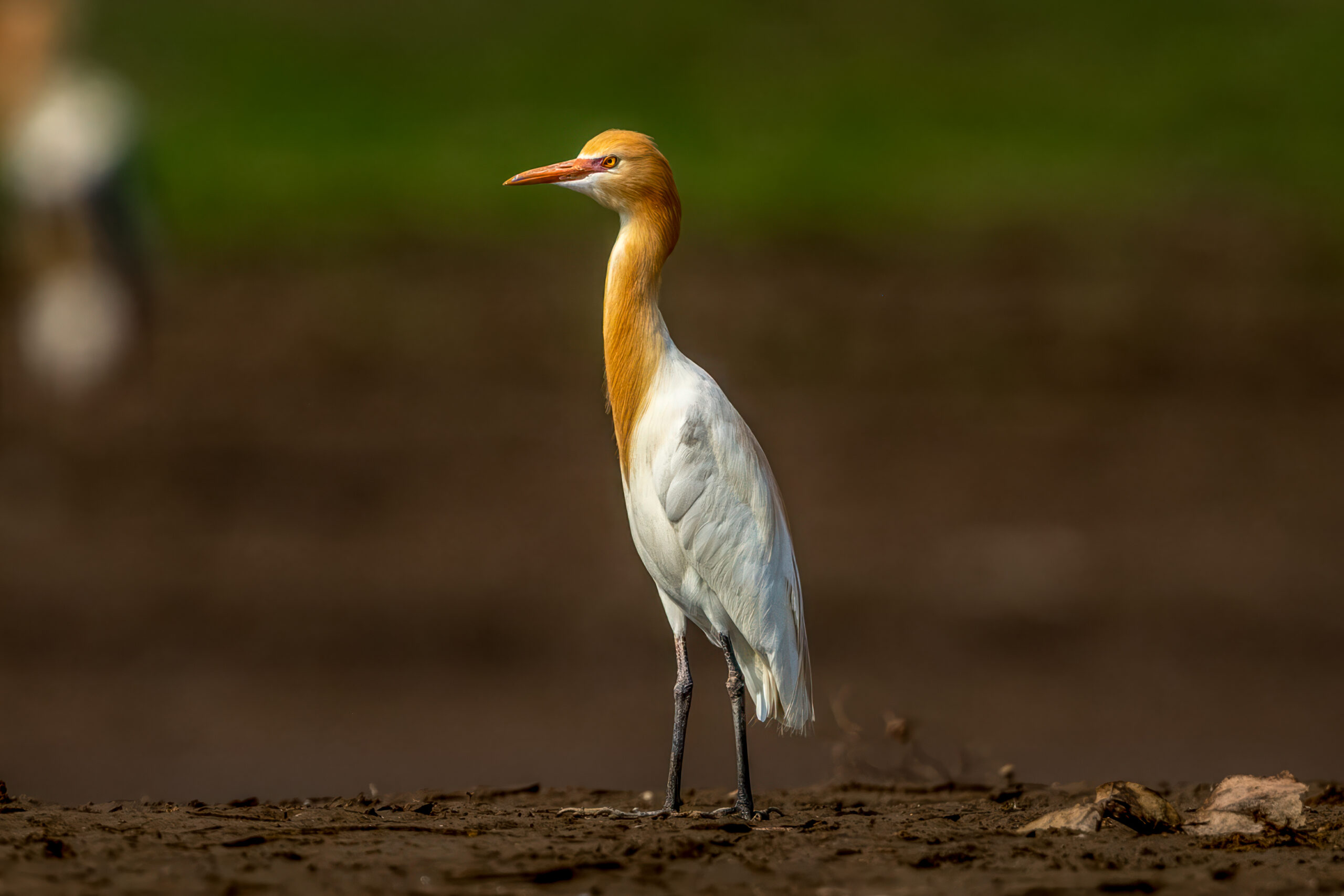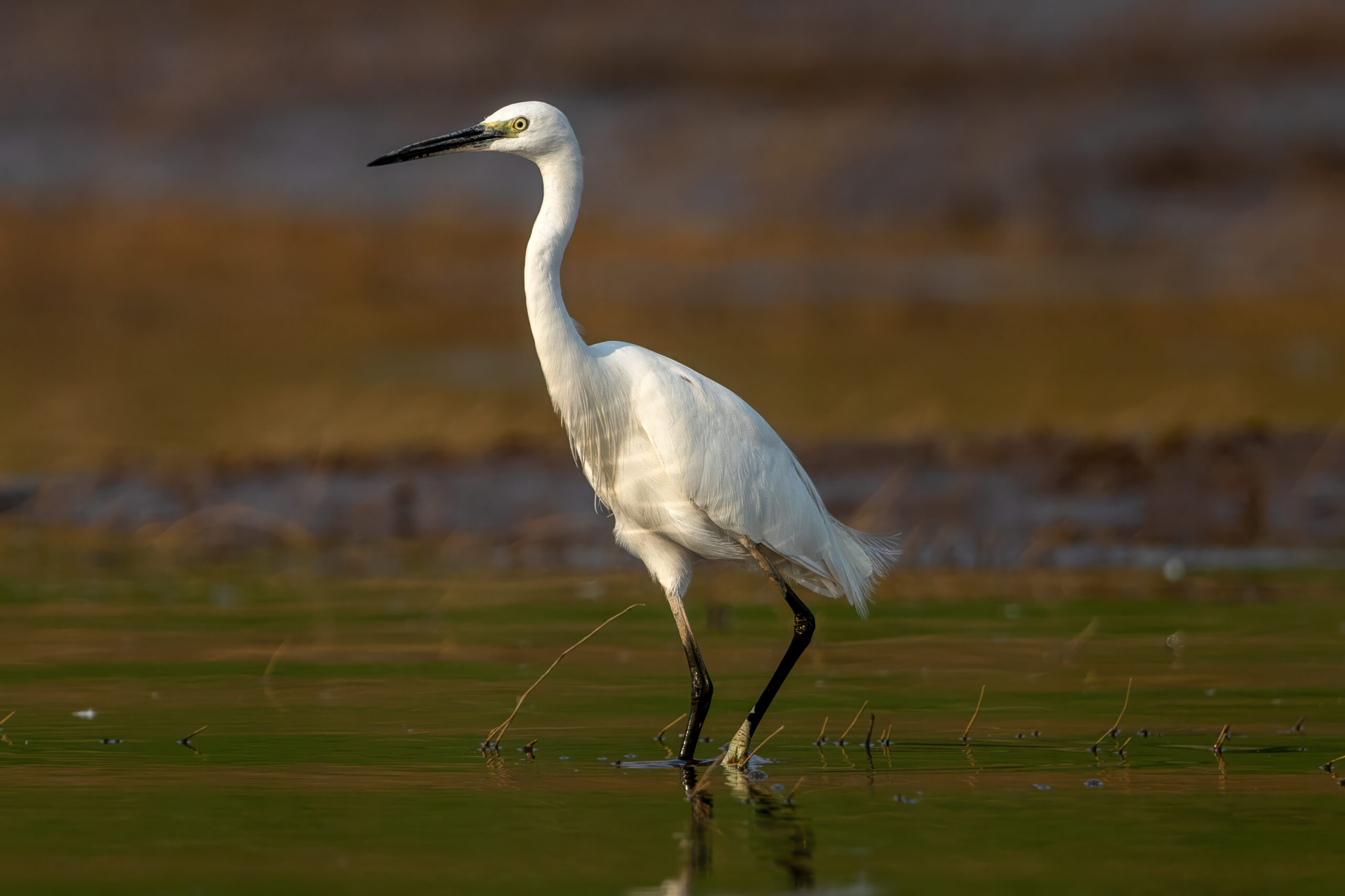Description
The snowy egret (Egretta thula) is a small, graceful heron known for its beautiful white plumage, slender black bill, and long black legs with distinctive yellow feet. It is native to the Americas, with its range extending from the United States through Central and South America. Adults typically measure around 56 to 66 cm (22-26 in) in length, with a wingspan of approximately 100 cm (3.3 ft). It is very similar to the little egret (Egretta garzetta), which is found in Europe, Africa, Asia, and Australia. The little egret is slightly larger on average, but the main differences are the bright yellow lores at base of the black bill on the snowy egret (which is greenish to grey in the little egret), and the head plumes (the snowy egret has multiple short ones, whereas the little egret has two long ones).
Diet & habitat
Snowy egrets are commonly found in wetland habitats, including marshes, swamps, shores, and tide flats. The species has adapted well to human-altered landscapes and can often be spotted in urban or suburban wetlands. These birds have a diverse diet consisting mainly of fish, crustaceans, insects, and small reptiles. Snowy egrets are active foragers, often seen running or shuffling their feet in shallow water to flush out prey. They may also hover, dip, or use their wings to create shade and entice fish.
Nesting
The breeding season for snowy egrets varies geographically, but generally occurs in spring and summer. They are colonial nesters, often sharing breeding sites with other wading birds. Nests are built in trees or shrubs near water bodies. Courtship displays include elaborate posturing, bill raising, and plumage fluffing. Females lay 3 to 5 pale blue-green eggs, with an incubation period of about 22 to 25 days. Both parents share in incubation and feeding duties. Fledglings leave the nest approximately 20 to 25 days after hatching.
Status
Snowy egrets were once heavily hunted for their plumes in the late 19th and early 20th centuries, leading to significant population declines. Conservation efforts and legal protection have since helped their numbers recover. The population is now increasing and it is listed as least concern on the IUCN Red List.







